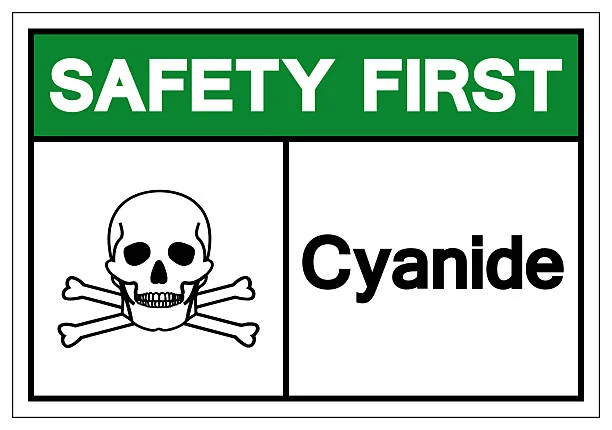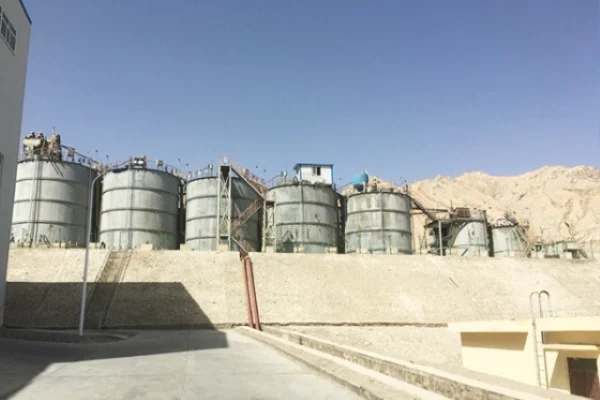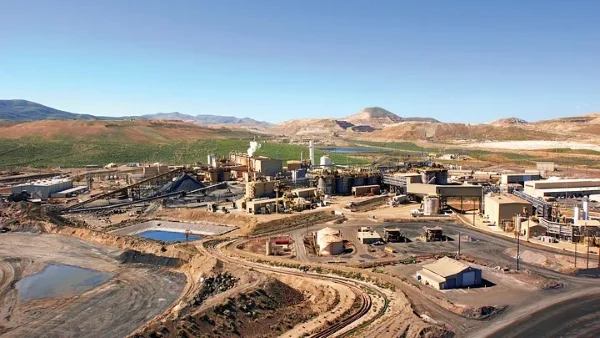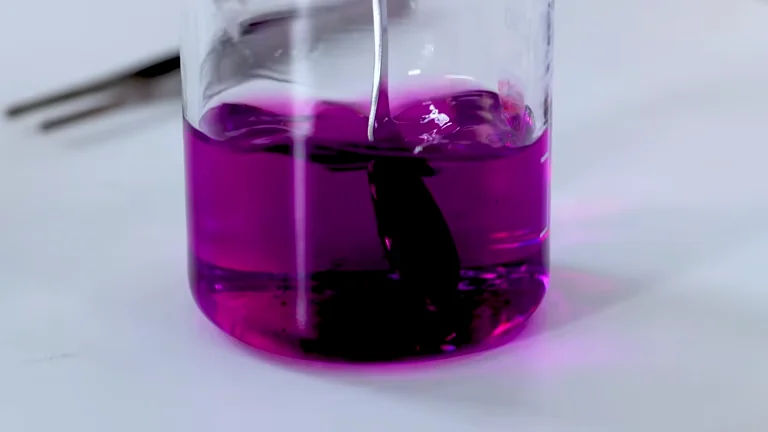
Introduction
Cyanide is widely used in the mining industry, especially in gold and silver extraction processes due to its ability to form stable complexes with these precious metals. However, the presence of cyanide in tailings poses significant environmental and health risks. Cyanide is highly toxic to aquatic life, plants, and animals, and can contaminate water sources if not properly treated. As a result, effective methods for detoxifying cyanide in tailings are of utmost importance. One such method is the use of hypochlorite, which has shown promise in destroying cyanide compounds and reducing their toxicity.
Understanding Cyanide in Tailings
Sources of Cyanide in Mining Operations
In the mining industry, cyanide is primarily used in the cyanidation process, which is a common method for extracting gold and silver from their ores. The process involves the dissolution of gold and silver in a cyanide solution, forming soluble metal-cyanide complexes. After the extraction process, the remaining tailings contain residual cyanide, which can be in the form of free cyanide (CN-), complexed cyanide (e.g., metal-cyanide complexes such as Cu(CN)32-), or weakly bound cyanide. The concentration of cyanide in tailings can vary widely depending on factors such as the type of ore, the mining and extraction methods used, and the efficiency of the cyanide recovery process.
Environmental and Health Risks of Cyanide in Tailings
Cyanide is a highly toxic substance that can have severe impacts on the environment and human health. In the environment, cyanide can be toxic to aquatic organisms even at very low concentrations. It can inhibit the normal functioning of cells by interfering with the respiratory enzyme cytochrome oxidase, leading to oxygen deprivation and ultimately death. In addition, cyanide can react with other substances in the environment to form more toxic compounds, such as hydrogen cyanide gas, which is extremely hazardous to human health.
For humans, exposure to cyanide can occur through inhalation, ingestion, or skin contact. Acute exposure to high levels of cyanide can cause symptoms such as headache, dizziness, nausea, vomiting, rapid breathing, and in severe cases, can lead to coma and death. Chronic exposure to low levels of cyanide can also have long-term health effects, including damage to the nervous system, thyroid gland, and reproductive system.
Hypochlorite: An Effective Cyanide Destroyer
Types of Hypochlorite Used in Cyanide Treatment
Hypochlorite is a chemical compound containing the ClO- ion. In the treatment of cyanide tailings, two common types of hypochlorite are used: sodium hypochlorite (NaClO) and calcium hypochlorite (Ca(ClO)2). Sodium hypochlorite is a pale greenish-yellow liquid that is relatively easy to handle and store. It is often used in industrial applications due to its high solubility and ease of dosing. Calcium hypochlorite, on the other hand, is a white solid that is more stable than sodium hypochlorite and can be used in situations where a more concentrated source of hypochlorite is required.
Reaction Mechanism of Hypochlorite with Cyanide
The reaction between hypochlorite and cyanide occurs in a series of steps. In the first step, hypochlorite oxidizes cyanide to cyanate (CNO-). The reaction can be represented by the following equation:
CN- + ClO- → CNO- + Cl-
This reaction is relatively fast and occurs under alkaline conditions. The cyanate formed in this step is much less toxic than cyanide, but it can still be further oxidized. In the second step, the cyanate is hydrolyzed and further oxidized to form carbon dioxide (CO2), nitrogen gas (N2), and chloride ions (Cl-). The overall reaction can be represented as:
2CNO- + 3ClO- + H2O → 2CO2 + N2 + 3Cl- + 2OH-
The complete oxidation of cyanide to non-toxic products is essential for ensuring the safety of the treated tailings and preventing environmental contamination.
Process of Hypochlorite Treatment for Cyanide Tailings
Pretreatment of Tailings
Before the hypochlorite treatment process, the cyanide tailings often require pretreatment to adjust their physical and chemical properties. This may include steps such as thickening to reduce the volume of the tailings slurry, pH adjustment to create the optimal alkaline conditions for the reaction with hypochlorite, and removal of any solid particles or impurities that could interfere with the treatment process.
Addition of Hypochlorite
Once the tailings are pretreated, hypochlorite is added to the tailings slurry. The amount of hypochlorite required depends on several factors, including the initial concentration of cyanide in the tailings, the type of hypochlorite used, and the desired level of cyanide destruction. In general, an excess of hypochlorite is added to ensure complete oxidation of the cyanide. The hypochlorite can be added in the form of a solution or a solid, depending on the type of hypochlorite and the treatment system.
Reaction Conditions and Monitoring
The reaction between hypochlorite and cyanide occurs under alkaline conditions, typically at a pH range of 10 - 12. The temperature of the reaction can also affect the reaction rate, with higher temperatures generally leading to faster reactions. However, in most industrial applications, the reaction is carried out at ambient temperature to reduce energy costs.
During the treatment process, it is important to monitor the concentration of cyanide, hypochlorite, and other parameters such as pH and temperature. This can be done using various analytical techniques, such as titration, spectrophotometry, or ion-selective electrodes. Monitoring allows for the adjustment of the treatment process to ensure that the desired level of cyanide destruction is achieved and that the treatment process is operating efficiently.
Post-treatment and Disposal
After the reaction is complete and the cyanide has been effectively destroyed, the treated tailings may undergo further post-treatment steps. This may include neutralization of the pH to a more environmentally acceptable level, removal of any remaining solids or precipitates, and final analysis to confirm that the cyanide concentration in the tailings meets the regulatory requirements. Once the treated tailings meet the disposal criteria, they can be safely disposed of in an appropriate manner, such as in a landfill or a tailings impoundment.
Advantages of Hypochlorite Treatment
High Efficiency in Cyanide Destruction
Hypochlorite treatment has been shown to be highly effective in destroying cyanide in tailings. Under the right conditions, it can achieve a high degree of cyanide oxidation, reducing the cyanide concentration to levels that meet or even exceed regulatory requirements. This high efficiency is due to the strong oxidizing power of hypochlorite, which allows it to rapidly react with cyanide and convert it to non-toxic products.
Cost-effectiveness
Compared to some other methods of cyanide treatment, such as electrochemical oxidation or ozone treatment, hypochlorite treatment can be relatively cost-effective. The cost of hypochlorite is generally lower than that of some other oxidizing agents, and the equipment and process requirements for hypochlorite treatment are relatively simple. In addition, the reaction can be carried out at ambient temperature and pressure, reducing energy costs. However, the actual cost of the treatment process can vary depending on factors such as the scale of the operation, the availability of hypochlorite, and the cost of transportation and disposal of the treated tailings.
Ease of Handling and Storage
Sodium hypochlorite, in particular, is relatively easy to handle and store. It is a liquid that can be easily pumped and dosed into the tailings slurry. Calcium hypochlorite, although a solid, can also be stored and handled with proper safety precautions. Both types of hypochlorite are relatively stable under normal storage conditions, which makes them suitable for use in mining operations where long-term storage and reliable availability are important.
Challenges and Considerations
Potential Side Reactions
Although hypochlorite treatment is effective in destroying cyanide, there can be potential side reactions that may occur. For example, hypochlorite can react with other substances present in the tailings, such as sulfides, thiosulfates, and organic matter. These side reactions can consume hypochlorite and reduce its effectiveness in cyanide destruction. In addition, some of the side reactions may produce by-products that could have environmental or health implications. For instance, the reaction of hypochlorite with sulfides can produce sulfur dioxide gas, which is a pollutant. To minimize these side reactions, it is important to carefully characterize the tailings and optimize the treatment process parameters.
Impact on Tailings Properties
The addition of hypochlorite to the tailings can also have an impact on the physical and chemical properties of the tailings. For example, the oxidation process can cause changes in the surface charge of the tailings particles, which may affect their settling behavior and the efficiency of solid-liquid separation processes. In addition, the presence of residual hypochlorite or its reaction products in the treated tailings may have implications for the long-term stability and environmental impact of the tailings. It is therefore important to consider these factors when designing and implementing the hypochlorite treatment process.
Regulatory and Safety Aspects
The use of hypochlorite in cyanide tailings treatment is subject to strict regulatory requirements. Mines must ensure that the treatment process meets all relevant environmental and safety regulations. This includes requirements for the storage, handling, and disposal of hypochlorite, as well as the monitoring and reporting of cyanide and other contaminants in the treated tailings. In addition, hypochlorite is a strong oxidizing agent and can pose safety risks if not handled properly. It is important to provide proper training to the operators and implement appropriate safety measures, such as the use of personal protective equipment and the installation of safety devices in the treatment area.
Conclusion
Hypochlorite treatment is a viable and effective method for destroying cyanide in tailings. It offers several advantages, including high efficiency in cyanide destruction, cost-effectiveness, and ease of handling and storage. Through case studies, we have seen that many mining operations have successfully implemented hypochlorite treatment processes to meet their environmental compliance requirements and improve their overall operational performance.
However, like any treatment method, hypochlorite treatment also has its challenges and considerations. Potential side reactions, impacts on tailings properties, and regulatory and safety aspects need to be carefully addressed. By understanding these factors and optimizing the treatment process, mines can ensure the safe and effective use of hypochlorite in cyanide tailings treatment.
As the mining industry continues to face increasing environmental scrutiny, the development and implementation of sustainable and effective cyanide treatment methods, such as hypochlorite treatment, will play a crucial role in minimizing the environmental impact of mining operations and protecting human health and the environment.
- Random Content
- Hot content
- Hot review content
- Flexible Customer and Supplier Relations Specialist (Location: India)
- Hydrogen Peroxide
- Fertilizer magnesium sulfate/magnesium sulfate monohydrate
- Sodium sulphate 99% Pharmacy Grade
- Maleic Anhydride - MA
- Food grade Antioxidant T501 Antioxidant 264 Antioxidant BHT 99.5%
- How does Sodium Ferrocyanide help in the mineral flotation process?
- 1Discounted Sodium Cyanide (CAS: 143-33-9) for Mining - High Quality & Competitive Pricing
- 2China's New Regulations on Sodium Cyanide Exports and Guidance for International Buyers
- 3Sodium Cyanide 98% CAS 143-33-9 gold dressing agent Essential for Mining and Chemical Industries
- 4International Cyanide(Sodium cyanide) Management Code - Gold Mine Acceptance Standards
- 5China factory Sulfuric Acid 98%
- 6Anhydrous Oxalic acid 99.6% Industrial Grade
- 7Oxalic acid for mining 99.6%
- 1Sodium Cyanide 98% CAS 143-33-9 gold dressing agent Essential for Mining and Chemical Industries
- 2High Quality 99% Purity of Cyanuric chloride ISO 9001:2005 REACH Verified Producer
- 3Zinc chloride ZnCl2 for High Molecular Weight Polymers Initiator
- 4High Purity · Stable Performance · Higher Recovery — sodium cyanide for modern gold leaching
- 5High Quality Sodium Ferrocyanide / Sodium Hexacyanoferr
- 6Gold Ore Dressing Agent Safe Gold Extracting Agent Replace Sodium Cyanide
- 7Sodium Cyanide 98%+ CAS 143-33-9











Online message consultation
Add comment: